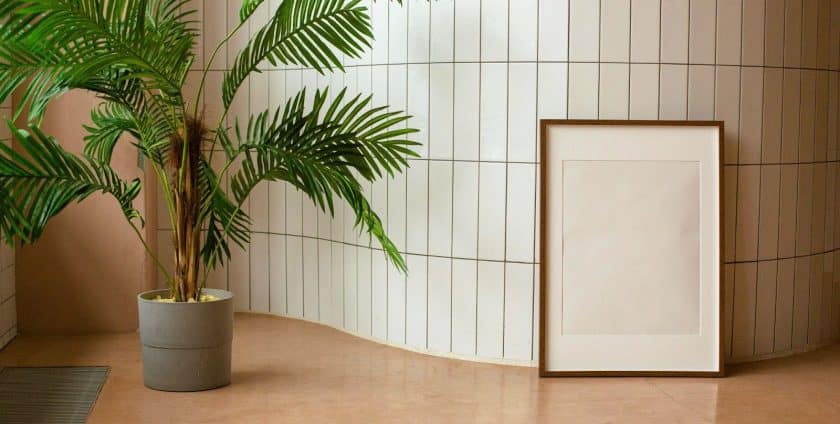
According to the Australian Institute of Health and Welfare, approximately 2.8 million Australians suffer from asthma, and around 15% of the population holds sensitivity to an allergic disease. Furthermore, studies indicate a 10-30% increase in the prevalence of allergic diseases in recent years. With numbers like these, it’s easy to see why many go to great lengths to allergy-proof their homes – however, they often overlook one of the largest allergy-causing parts of the home. While meticulous cleaning and ensuring unobstructed airflow can provide some relief, your choice of flooring material remains essential. Flooring acts as the catch basin for every particle entering your home. To ensure that it does not undermine your allergy-proofing efforts, it is crucial to select flooring materials with anti-allergy properties – with cork flooring installation being a prime example! Croydon Floors explore how your flooring can affect allergies and asthma, and how cork flooring Melbourne – wide can be an excellent solution.
How Flooring Affects Asthma and Allergies
Dust and Airborne Allergens
Airborne allergens such as dust, dander, pollen, and more will eventually settle onto surfaces like the floor. However, some flooring materials are more prone to hold onto these allergens than others. Carpets, for instance, trap various air pollutants like dust mites, mould spores, and even the particles of toxic gases in their fibres – which are relaunched into the air with every step taken on the carpet. Despite claims by manufacturers that modern carpets and rugs made of hypoallergenic materials are safe, research indicates otherwise. More recent data supports the assertion that carpets correlate to decreased indoor air quality and adverse health effects.
Mould and Mildew
Exposure to moisture can lead to the development of mould and mildew on certain types of flooring, producing spores that affect both allergic and non-allergic individuals by way of respiratory infections, asthma and other lung-relevant physiology. Inhalation of these spores can cause irritation, itching, and inflammation, and becomes even more dangerous when mould starts affecting the integrity of your flooring via staining, buckling, and rot.
Because wood is porous, it is more susceptible to mould and mildew growth than other materials like tile. Even a small leak can infiltrate hardwood floors facilitating mould growth that weakens the wood fibres and initiates the process of wood rot.
Volatile Organic Compounds (VOC’s)
VOCs encompass a variety of chemicals, both man-made and found in nature, that evaporate into the air and pose potential health risks. Some of the most common VOC sources found at home include paints, aerosol sprays, cleansers, disinfectants, and insect repellents. Additionally, they naturally find themselves in many building materials such as vinyl, laminate, and engineered hardwood.
According to studies published by The International Journal of Building Science and Its Applications, the level of VOC’s is often many times higher indoors than outdoors in Australia. This presents a significant risk to asthma and allergy-affected individuals, as these chemicals exacerbate their symptoms and can often lead to wheezing, increased difficulty in breathing, and asthmatic attacks.
Why Choose A Cork Flooring Installation as an Anti-Allergy Material?
Your cork flooring installation typically includes sheets of ground and compressed cork, bonded with resins. This is harvested by hand from cork oak trees in commercial plantations every 9 – 14 years once the trees have reached 25 years of age. Given that the harvesting process leaves the tree unaffected, the bark re-grows in the same quality – making this flooring material one of the most eco-friendly types in the market.
The material is also biodegradable and will decompose at the end of its life cycle. You can place and re-install in different locations without adverse effects, making it a renewable flooring option. Its convenience to sustainability and ease of use aside, one of its biggest benefits is its hypoallergenic properties.
Cork contains a naturally waxy substance called Suberin, which acts as a physical barrier that prevents water loss from the plant, and protects it against pathogens. This allows cork to repel insect infestations and resist the growth of microbes. However, cork flooring needs to be properly sealed to completely deter the growth of mould and mildew.
As a natural substance, cork flooring doesn’t emit harmful gases. Once sealed, it doesn’t provide any crevices where dust and other harmful airborne allergens can adhere to. Sweeping and vacuuming are also enough to rid the surface of bigger dust particles, while a damp mop can eliminate remaining allergens reducing the need of chemical cleaners that contain VOCs.
Additionally, cork flooring in Melbourne is known for its comfort, alleviating strain on feet and legs when walking or standing for extended periods. Its natural insulating properties maintain steady temperatures throughout the seasons, reducing the need for additional carpets or rugs that can trap airborne particles.
Final Thoughts – Croydon Floors
By choosing cork flooring, you opt not only for a material that naturally resists dust, mould, and mildew, but you’re also making a sustainable and eco-friendly choice. Its hypoallergenic properties, ease of maintenance, and durability make it an ideal flooring solution for creating a safe and healthy home.
For more insights into cork flooring in Melbourne and other flooring options available, visit or contact us at Croydon Floors.
- By: Croydon Floors
- Category: Cork Flooring
- 0 comment
